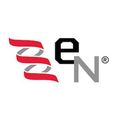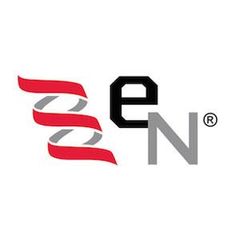The principles of post-workout or recovery nutrition can be quite simple and easily be accounted for in a client’s custom nutrition plan. These principles include providing energy to replace muscle glycogen stores, helping to maximize the repair of muscle damage, and sufficiently replenishing any fluids and electrolytes lost during training.
Simply put, you need to help your clients follow the three “R’s” of recovery—refuel, rebuild and rehydrate. These are the cornerstones of post-workout and recovery nutrition. They are also essential for maximizing the training effect, which can have different applications depending on the type, intensity and duration of the activity. Here is a brief overview of the three R’s of recovery, followed by sample recovery diets for three specific workouts.
1. Refuel
Nutritional recovery starts by refueling with glycogen or carbohydrates. Carbohydrates provide the body and brain with the fuel needed to recover and ultimately adapt to the training session.
Current data indicates that after a workout the muscle cells’ ability to begin rebuilding and replenishment peaks at about 15 minutes and declines by as much as 40 percent within 60 minutes.
Researchers report that immediate intake of carbohydrates results in a 300 percent increase in muscle glycogen at two hours and a 135 percent increase at four hours.
2. Rebuild
The next step is rebuilding cells by focusing on the protein and amino acids required to help maximize muscle repair. Even a simple cardio session results in muscle breakdown, so protein is an essential component for all post-exercise nutrition.
In a 2010 review published in the International Journal of Sports Nutrition Exercise and Metabolism, researchers noted that the consumption of 20 grams of protein, or an equivalent of 9 grams of essential amino acids, can maximize muscle protein-synthesis rates during the first hours of post-exercise recovery.
However, the amount of protein needed in the post-workout period is often overestimated. There are certain levels of protein that are needed, but more doesn’t always mean more muscle or better recovery.
Depending on the type and intensity of exercise, and the total calories of course needed for recovery, a range of 0.3 to 0.5 grams per kg of bodyweight, or a 3:1 ratio of carbohydrates to protein, is recommended.
3. Rehydrate
The final step is rehydration. Adequate fluids help regulate body temperature and blood pressure, and transport energy and nutrients throughout the body.
That is why it is essential to allow the body to achieve balance and maintain the process of recovery by replenishing any fluids lost during activity.
Cramping and muscle fatigue can often keep clients from sticking to a workout plan. By rehydrating and replenishing sodium, they’ll be able to reduce these post-workout symptoms.
To learn more about how you to calculate how much water your clients should be drinking, check out this Evolution Nutrition blog on hydration.
Now that you’ve had a chance to skim over the three R’s, let’s put them into practice using three different workouts.
Steady-state Cardio Recovery Nutrition
Goal: To rehydrate and replenish electrolytes, while maximizing post-exercise calorie burning
Recovery Snack Options: Whole-wheat crackers, fresh fruit with high water content and cheese
6 whole-wheat crackers
1 medium apple (sliced)
2 slices non-fat cheese
Nutrition: 278 Calories / 43g Carbohydrate / 13g Protein / 6g Fat
Post-workout Yogurt Parfait
¼ C nonfat yogurt
½ C whole grain cereal
½ C fresh strawberries (or other berry)
Nutrition: 270 Calories / 62 g Carbohydrate / 10g Protein / 2g Fat
Guidelines: Fluids and electrolytes can be consumed immediately after and should be equal to about 16 to 20 ounces of water/fluid for every pound lost during the steady-state cardio. If bodyweight loss cannot be measured, a good rule of thumb is to drink 1 cup immediately after exercise, and 2 to 3 cups of fluid over the next few hours of recovery. Wait 20 to 30 minutes before you start to replenish energy stores with carbohydrates, proteins or fats, but listen to your body and eat if you feel like you need to fuel.
Weightlifting Recovery Nutrition
Goal: To maximize the “anabolic window” or recovery phase 30 to 45 minutes after the workout
Recovery Snack Options: Pita bread with hummus and black bean spread.
½ whole-wheat pita (large)
2 T hummus
2 T black bean spread
Nutrition: 261 Calories / 46g Carbohydrate / 8g Protein / 5g Fat
Oatmeal Protein Power
½ C cooked steel-cut oats
1 T shaved almonds
2 T protein powder
Nutrition: 287 Calories / 40g Carbohydrate / 16g Protein / 7g Fat
Guidelines: As with any workout, carbohydrates are essential to recovery post-weightlifting. To successfully rebuild muscle, special attention should be paid to how much protein is being consumed.
Recovery Nutrition for HIIT (Cardio and Weightlifting)
Goals: To replace energy stores within 30 minutes after workout and to repair muscle tissue
Recovery Snack Options: One post-workout drink that is equal to about one-quarter of total carbs needed for recovery (e.g., 12- to 16-ounce fruit smoothie made with water, skim milk or a non-dairy milk alternative and protein powder) AND one workout snack
Power Fruit Smoothie
1½ C skim milk (nonfat)
½ C frozen berries
Banana and Peanut Butter on a Rice Cake
½ banana (small)
½ T peanut butter
1 multigrain rice cake
Nutrition: 297 Calories / 47g Carbohydrate / 16g Protein / 5g Fat
Guidelines: Because HIIT has a higher work rate, more fluids are used and more fuel is burned. That means both will need to be replenished in higher rates than in the other two workouts. HIIT’s combination of cardio and weightlifting requires an initial liquid recovery snack, which can be consumed first or closely followed by a nutrient dense meal or snack. Post-workout, a 3:1 ratio is a good standard to use with carbs and protein (e.g., 30 to 40 grams of carbs with 10 to 15 grams of protein).




 by
by 










 by
by